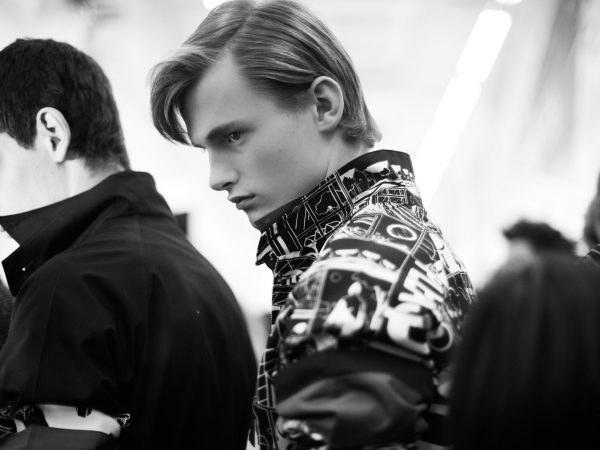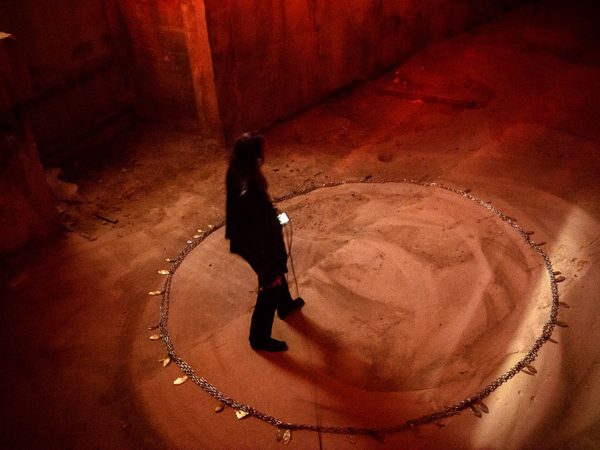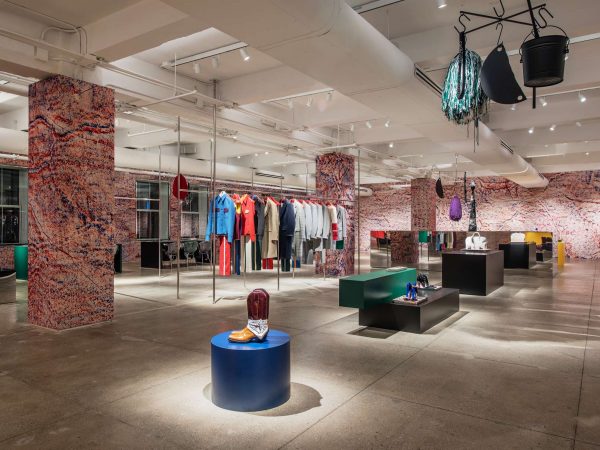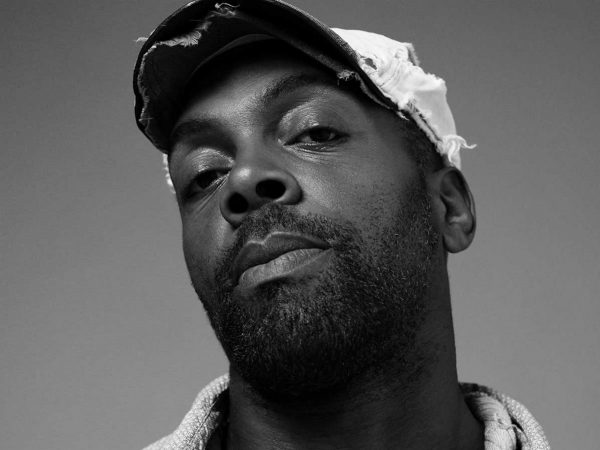Photographer Moises Saman was in Haiti in the days after the earthquakes that devastated the island nation. Document spoke with him about the role of the documentary photographer in times of crisis.
January 12, 2015 marked the five year anniversary of the earthquake in Haiti, which left more than a million people home less and more than 100,000 dead. Five years later Haitians around the world, the Vatican, social service and media organizations everywhere remember this powerful moment. The devastating event, one of the worst natural disasters of recent times, generated an unprecedented moment of international concern.
During this time, photography and media were essential in encouraging immediate support and long term commitment to securing the well being of those who were displaced. Photojournalists from around the world traveled to Haiti to document the deaths and the injuries, and the extent to which the capital city was reduced to ruins. Photographers played a huge role in informing the world of the extent of human suffering taking place in Haiti.
Document, thus, also commemorates the cosmopolitan effort that took place in response to the earthquake of 2010 by considering the social role of the photographer in this and other scenarios. Certainly the work of photographers served to underscore the urgency of what was being reported in the news and emphasized getting across reality as fact, no matter how grim.
Above The Fold

Sam Contis Studies Male Seclusion

Slava Mogutin: “I Transgress, Therefore I Am”

The Present Past: Backstage New York Fashion Week Men’s Spring/Summer 2018

Pierre Bergé Has Died At 86

Falls the Shadow: Maria Grazia Chiuri Designs for Works & Process

An Olfactory Memory Inspires Jason Wu’s First Fragrance

Brave New Wonders: A Preview of the Inaugural Edition of “Close”

Georgia Hilmer’s Fashion Month, Part One

Modelogue: Georgia Hilmer’s Fashion Month, Part Two

Surf League by Thom Browne

Nick Hornby: Grand Narratives and Little Anecdotes

The New Helmut

Designer Turned Artist Jean-Charles de Castelbajac is the Pope of Pop

Splendid Reverie: Backstage Paris Haute Couture Fall/Winter 2017

Tom Burr Cultivates Space at Marcel Breuer’s Pirelli Tire Building

Ludovic de Saint Sernin Debuts Eponymous Collection in Paris

Peaceful Sedition: Backstage Paris Fashion Week Men’s Spring/Summer 2018

Ephemeral Relief: Backstage Milan Fashion Week Men’s Spring/Summer 2018

Olivier Saillard Challenges the Concept of a Museum

“Not Yours”: A New Film by Document and Diane Russo

Introducing: Kozaburo, 2017 LVMH Prize Finalist

Introducing: Marine Serre, 2017 LVMH Prize Finalist

Conscious Skin

Escapism Revived: Backstage London Fashion Week Men’s Spring/Summer 2018

Introducing: Cecilie Bahnsen, 2017 LVMH Prize Finalist

Introducing: Ambush, 2017 LVMH Prize Finalist

New Artifacts

Introducing: Nabil Nayal, 2017 LVMH Prize Finalist

Bringing the House Down

Introducing: Molly Goddard, 2017 LVMH Prize Finalist

Introducing: Atlein, 2017 LVMH Prize Finalist

Introducing: Jahnkoy, 2017 LVMH Prize Finalist

LVMH’s Final Eight

Escaping Reality: A Tour Through the 57th Venice Biennale with Patrik Ervell

Adorned and Subverted: Backstage MB Fashion Week Tbilisi Autumn/Winter 2017

The Geometry of Sound

Klaus Biesenbach Uncovers Papo Colo’s Artistic Legacy in Puerto Rico’s Rainforest

Westward Bound: Backstage Dior Resort 2018

Artist Francesco Vezzoli Uncovers the Radical Images of Lisetta Carmi with MoMA’s Roxana Marcoci

A Weekend in Berlin

Centered Rhyme by Elaine Lustig Cohen and Hermès

How to Proceed: “fashion after Fashion”

Robin Broadbent’s Inanimate Portraits

“Speak Easy”

Revelations of Truth

Re-Realizing the American Dream

Tomihiro Kono’s Hair Sculpting Process

The Art of Craft in the 21st Century

Strength and Rebellion: Backstage Seoul Fashion Week Autumn/Winter 2017

Decorative Growth

The Faces of London

Document Turns Five

Synthesized Chaos: “Scholomance” by Nico Vascellari

A Whole New World for Janette Beckman

New Ceremony: Backstage Paris Fashion Week Autumn/Winter 2017

New Perspectives on an American Classic

Realized Attraction: Backstage Milan Fashion Week Autumn/Winter 2017

Dematerialization: “Escape Attempts” at Shulamit Nazarian

“XOXO” by Jesse Mockrin

Brilliant Light: Backstage London Fashion Week Autumn/Winter 2017

The Form Challenged: Backstage New York Fashion Week Autumn/Winter 2017

Art for Tomorrow: Istanbul’74 Crafts Postcards for Project Lift

Inspiration & Progress

Paskal’s Theory of Design

On the Road

In Taiwan, American Designer Daniel DuGoff Finds Revelation

The Kit To Fixing Fashion

The Game Has Changed: Backstage New York Fashion Week Men’s Autumn/Winter 2017

Class is in Session: Andres Serrano at The School

Forma Originale: Burberry Previews February 2017

“Theoria”

Wearing Wanderlust: Waris Ahluwalia x The Kooples

Approaching Splendor: Backstage Paris Haute Couture Spring/Summer 2017

In Florence, History Returns Onstage

An Island Aesthetic: Loewe Travels to Ibiza

Wilfried Lantoine Takes His Collection to the Dancefloor

A Return To Form: Backstage New York Fashion Week Spring/Summer 2018

20 Years of Jeremy Scott

Offline in Cuba

Distortion of the Everyday at Faustine Steinmetz

Archetypes Redefined: Backstage London Fashion Week Spring/Summer 2018

Spring/Summer 2018 Through the Lens of Designer Erdem Moralıoğlu

A Week of Icons: Backstage Milan Fashion Week Spring/Summer 2018

Toasting the New Edition of Document

Embodying Rick Owens

Prada Channels the Wonder Women Illustrators of the 1940s

Andre Walker’s Collection 30 Years in the Making

Fallen From Grace, An Exclusive Look at Item Idem’s “NUII”

Breaking the System: Backstage Paris Fashion Week Men’s Autumn/Winter 2017

A Modern Manufactory at Mykita Studio

A Wanted Gleam: Backstage Milan Fashion Week Men’s Autumn/Winter 2017

Fashion’s Next, Cottweiler and Gabriela Hearst Take International Woolmark Prize

Beauty in Disorder: Backstage London Fashion Week Men’s Autumn/Winter 2017

“Dior by Mats Gustafson”

Prada’s Power

George Michael’s Epochal Supermodel Lip Sync

The Search for the Spirit of Miss General Idea

A Trace of the Real

Wear and Sniff

Underwater, Doug Aitken Returns to the Real
But this need to be objective, to present reality brings up many ethical questions in a time when images are routinely doctored and environments are often manipulated for increased visual effect. What role do objectivity and subjectivity play in photography, then, when social responsibility and reaching the masses is of primary importance? And does a documentary emphasis contradict artistic experimentation in photography, or might they go hand in hand? As these conversations will show, documenting means many things.
Moises Saman had been taking pictures in the Middle East, in war torn countries such as Iraq and Afghanistan, but also found himself drawn to Haiti. Saman had been working in Haiti on and off for several years before the earthquake. He’d been there often since the late 90s, even during the tumultuous coup of the mid 90s. He fondly remembers traveling to Port-au-Prince with Wyclef Jean during a carnival celebration, and witnessing the vibrancy of the community. That joy and sociability finds its way into his work. Elegiac, Saman’s photos are not just about death and destruction. But his photos capture the dismal as well as the human. They contain signs of beauty, liveliness, community, and ceremony amidst the tumult.
In one stunning photo, a male and female couple are walking hand in hand through a landscape full of destruction. The shot is taken at an angle that suggests the world has been turned on its head, that disorientation has occurred, and that an important balance has been lost. The scene is so empty of other humans that they appear as an Adam and Eve, cast out of Eden, though, in fact, they may be some of the only survivors around. Fires smolder behind fallen doors and in the rubble around them. Fire and smoke indicate that their world is still in the process of being destroyed, the dark shades of the environment almost bloodlike.

A couple walks hand in hand through a devastated area in downtown Port-au-Prince, one of the hardest hit areas by the January 12th earthquake, January 18, 2010.
Still, they move confidently, in their search for a resting place. The sun’s brightness still comes across, almost as a promise of regeneration to the couple walking through the destroyed land scape. The heroic figures walk, holding each other, moving yet resigned and resilient despite the fact that the man made world has succumbed to the power of the devastating earthquake. Sun, fire, and human survivors create a kind of sublime testament to the power of the natural world.
In another photo, there are more people, almost all men, attempting to rescue others from collapsed buildings, as well as salvage any important material items that might help them survive the uncertain days, weeks and months to come. The buildings appear massive in relation to the individuals moving about them.
They dominate when it comes to size but the color on the human bodies stands out in stark contrast to the grey of the rubble. The color highlights the importance of human activity, and despite their vulnerability, they appear anything but insect like, as they walk and climb through what has been destroyed. Pulling bodies and valuables from small, cramped spaces, their work comes across as energetic and vivid. The diversity of color saves the photo from mere austerity.
In a final shot, the human gaze takes center stage. The photo of the kneeling figures features a line of men, who themselves may have recently emerged from the rubble, exhibiting different facial expressions. They appear similar to a bundle of objects, tied together and immobile but they are distinctly human in expression. They are traumatized, frustrated, dazed, but also thoughtful, contemplative, and questioning of their sudden circumstance.
Carmelo Larose—You take photos in conflict regions, but Haiti suffered a natural disaster. Is there a difference between taking photos in a conflict area and a disaster area?
Moises Saman—They’re not quite the same. The most basic, obvious reason is that in a disaster area there’s not really anyone trying to kill you. The danger factor is somewhat lower. That would be the main difference. In terms of emotionality and the kind of dramatic, difficult situation the people can experience, sometimes it can be even more dramatic and emotional. Obviously you’re dealing with the same topics: death, destruction, it’s not man made. I saw some extremely disturbing scenes and dramatic situations, in Haiti in the aftermath of the earthquake, like in Iraq or Afghanistan.
Carmelo—What makes taking a shot so difficult under these types of circumstances?
Moises—I think what makes comprehend why something like this happens and how some thing so random and so senseless can destroy the life of a family or a child. I think when you’re working in a war zone, the violence is somewhat easy to blame one side or another. There’s a reason behind it. It’s senseless, but it’s violence with a goal. In an earthquake, or Katrina, or a tsunami, who do you blame? That’s what makes it a little strange and difficult to understand as a photographer. And for me it’s important to try to understand what I’m doing.
Carmelo—Do the photos clearly relate to the rest of your work, then? How do they fit into the larger body of your work?
Moises—I had been working in Haiti for several years. It’s a place I hold near to my heart. It’s a fascinating country. The people are warm and resilient. There’s a kind of enjoyment in life and a lightness in your pictures. It really kind of made an impression on me, so anyways, when the earthquake happened, I really wanted to be there. I’m not really sure if it fits within my larger body of work, like in the Middle East. It’s hard to find a connection, but for me it was important to be there nonetheless and to see the condition of the country after the earthquake. I think aesthetically speaking and as a photographer, your mission and the way you approach your subject develops over time. I think being there was important for my growth as a photographer. You experiment more with your work when you have a relationship with the place, and you are motivated and pushing yourself, and are honestly curious about things.

Looters climb a wall trying to enter a partially collapsed warehouse in downtown Port- au-Prince in the aftermath of January 12th’s devastating earthquake in Haiti, January 18, 2010.
Carmelo—You have an amazing ability to show beauty amidst the destruction?
Moises—It’s very important for me and I think what I’m looking for is a way to connect with a viewer that might be a thousand miles away. I think our humanity is what unites us all universally so when I find moments of humanity or beauty or an honest moment I think it transcends our differences. That’s what I’m looking for. I’m looking to transcend any cultural or social differences.
Carmelo—Does the photographer, then, take on a certain social responsibility?
Moises—That’s a difficult question. Yes, there’s a certain amount of responsibility that I feel. I cannot speak for anyone else. I do not want to speak for anyone else. One thing I learned in this business is that it’s not good to generalize for others, but I think there is some responsibility, but I’m not as idealistic as I used to be when I started out. It would be foolish to think I would make a huge difference with every picture I take, but even contributing to the dialogue and getting people to talk about things is important.
Carmelo—How did you find inspiration to continue taking pictures when you see so much devastation?
Moises—It’s not easy and you know I mean it’s just not that easy to remove yourself. I know that as a journalist you have a purpose and need to remove yourself from the situation to cover it and to photograph it, but it’s not easy. I haven’t figured out a formula yet. I’ve been doing that for more than 15 years. It’s always tough. I remember particularly in Haiti, the number of dead people and sometimes finding children literally on the side of the road dead; that stays with you for a long time. The motivation is a little bit a sense of duty or responsibility. There’s this kind of desire to contribute to the dialogue and to contribute to what people are reading about what’s happening and what people are seeing and always working with a lot of honesty, and I hope that comes out in the picture.
Carmelo—How do you define honesty?
Moises—Sometimes people ask me how can you be objective when you are taking pictures, but I tend to say I’m interested in being honest. When you come from an honest place when you are committed to the story and understand the story and when you come to it as open as possible is what I mean. I find that honesty drives me more than being objective, which as a concept is a little bit misleading. Working in such dramatic situations, working with death, really sad stories, it’s hard to be objective. You’re not a robot, you have feelings and emotions just like everyone else. For me this sense of honesty is more of what keeps me in check. You have to come with an understanding of the issue and with an openness to be surprised and to be led in a direction you didn’t think you were ready to go, but it has to come from you, there’s a motivation to stay true to yourself and to what you are there to do. This sense of honesty you develop over time. I am still developing it. You develop it as a photographer and as a human being. It’s what I aim for otherwise it’d be a disaster and you’d become jaded. It’s not a concept that is static. It develops in every trip and in every new story. It’s almost like a quest and it’s important to be aiming for that.




























